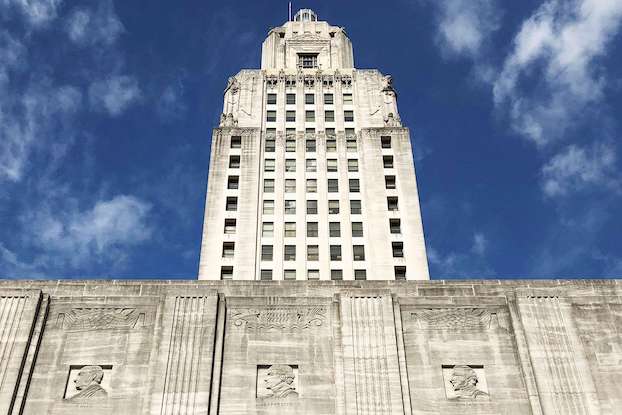Restoration work ongoing along state’s coast
Published 7:00 pm Wednesday, March 7, 2018
<p class="p1"><strong>They say how many football fields worth of land we lose each year on the coast. What is the state doing to protect and restore the coastline?</strong></p><p class="p2">In a draft of the Coastal Protection and Restoration Authority’s 2019 annual plan, Johnny Bradberry, chairman of the CPRA board, says the state has, in the last decade, “dredged 130 million cubic yards to restore or benefit 41,305 acres of land, constructed 60 miles of barrier islands and berms, improved 297 miles of levees, and secured $20 billion for protection and restoration in 20 parishes.”</p><p class="p2">The projects include the restoration of over 600 acres of marsh at Oyster Bayou using material dredged from offshore and the restoration of protective beach between the Calcasieu River jetties and Holly Beach, said CPRA spokesman Chuck Perrodin.</p><p class="p2">The marsh project cost about $31 million, and the beach project cost about $45 million, Perrodin said. </p><p class="p2">“In progress right now is a $28 million project to restore approximately 500 acres of marsh in the Cameron-Creole area at Grand Bayou,” he wrote in an email.</p><p class="p2">“Among the future projects for Cameron Parish is a $14 million project to add freshwater input into the Cameron-Creole marsh.”</p><p class="p2">Another project would use about $430 million in federal RESTORE Act money to fund measures to help control the salinity that enters via the Calcasieu Ship Channel, Perrodin said.</p><p class="p2">Other future projects for Cameron Parish, according to a CPRA list:</p><p class="p3">Cameron Meadows marsh creation and terracing, $35.4 million — “The purpose of this project is to restore degraded coastal marsh habitat and reestablish hydrologic connectivity. Material dredged from the Gulf of Mexico will be utilized to construct 334 acres of marsh and reestablish Old North Bayou drainage. The dredged material will also be used to construct 35,000 linear feet of terraces (approximately 18 acres) to reduce wind generated wave fetch.”</p><p class="p3">No Name Bayou marsh creation, $29.5 million — “The project goal is to create and/or nourish approximately 533 acres of emergent saline marsh within the Cameron-Creole watershed along the Calcasieu Lake rim using sediment from upland disposal sites of the Calcasieu River.”</p><p class="p3">South Grand Chenier marsh creation, $23.9 million — “The project’s goal is to create 430 acres and nourish 23 acres of emergent brackish and intermediate marsh. The project goal will be achieved by using dredged material from the Gulf to create two marsh cells (176 and 277 acres) in the project area east and west of Second Lake. Marsh restoration retention levees will be degraded and tidal creeks constructed one year post construction to restore the area’s natural hydrology and estuarine organism access.”</p><p class="p2">Perrodin said the latest U.S. Geological Survey report says Louisiana land loss now amounts to “a football field every 100 minutes,” rather than one every hour.</p><p class="p2">“A long way to go,” he said. “But progress is being made.”</p><p class="p5">For more info visit, <a href="http://coastal.la.gov." target="_blank">http://coastal.la.gov.</a></p><p class="p4">l</p><p class="p6">The Informer answers questions from readers each Sunday, Monday and Wednesday. It is researched and written by <strong>Andrew Perzo</strong>, an <em>American Press</em> staff writer. To ask a question, call 494-4098 and leave voice mail, or email informer@americanpress.com.</p>





